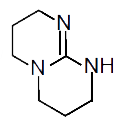For which of the following pairs, the expression pKa+pKb−14=14=0 is true? (a) KOH,HNO3 (b) CH2COOH,CH3COO−
(c ) RNH2,RNH+3 (d) RNH4OH,HCI
correct answer is :
a,b
c,d
b,c
a,d
The correct Answer is:C
To solve the question, we need to determine which of the given pairs of compounds satisfies the equation:
pKa+pKb−14=0
This can be rearranged to:
pKa+pKb=14
This equation holds true for conjugate acid-base pairs. Let's analyze each option:
Step 1: Analyze Each Pair
(a) KOH, HNO₃
- KOH is a strong base and HNO₃ is a strong acid.
- Strong acids and bases do not have conjugate pairs that satisfy the equation since their pKa and pKb values are not related in this way.
- Conclusion: This pair does not satisfy the equation.
(b) CH₃COOH, CH₃COO⁻
- CH₃COOH (acetic acid) is a weak acid and CH₃COO⁻ (acetate ion) is its conjugate base.
- For a conjugate acid-base pair, the relationship pKa+pKb=14 holds true.
- Conclusion: This pair satisfies the equation.
(c) RNH₂, RNH₃⁺
- RNH₂ (a primary amine) acts as a weak base and RNH₃⁺ (the conjugate acid) is formed when RNH₂ accepts a proton.
- This is a conjugate acid-base pair, so the relationship pKa+pKb=14 holds true.
- Conclusion: This pair satisfies the equation.
(d) RNH₄OH, HCl
- RNH₄OH is a weak base (ammonium hydroxide) and HCl is a strong acid.
- Similar to option (a), this pair does not represent a conjugate acid-base pair.
- Conclusion: This pair does not satisfy the equation.
Final Answer
The pairs that satisfy the equation pKa+pKb=14 are:
- (b) CH₃COOH, CH₃COO⁻
- (c) RNH₂, RNH₃⁺
- Strong acids and bases do not have conjugate pairs that satisfy the equation since their pKa and pKb values are not related in this way.
- Conclusion: This pair does not satisfy the equation.
- For a conjugate acid-base pair, the relationship pKa+pKb=14 holds true.
- Conclusion: This pair satisfies the equation.
- This is a conjugate acid-base pair, so the relationship pKa+pKb=14 holds true.
- Conclusion: This pair satisfies the equation.
- Similar to option (a), this pair does not represent a conjugate acid-base pair.
- Conclusion: This pair does not satisfy the equation.
- (c) RNH₂, RNH₃⁺
Similar Questions
Knowledge Check
- Question 1 - Select One
(i) F3C−COOH, (ii) CH3COOH, (iii) C6H5COOH, (iv) CH3CH2COOH
Correct order of pKa value is :A1 gt 3 gt 2 gt 4B4 gt 2 gt 3 gt 1C4 gt 3 gt 2 gt 1D1 gt 2 gt 4 gt 3 - Question 2 - Select One
Arrange in decreasing pKa
(a)F−CH2CH2COOH
(b)Cl−CH∣Cl−CH2−COOH
(c)F−CH2−COOH
(d)Br−CH2−CH2−COOH
Correct answer isAb>d>a>cBa>c>d>bCd>a>b>cDd>b>a>c - Question 3 - Select One
Formula CH3−(CH2)14−COOH is :-
APhospholipidBAgrachidonic acidCPalmitic acidDTriglyceride
Arrange the following in order of their pKb value
(a) (b) CH3−NH−CH3 (c) H2N−CH=NH View Solution
(b) CH3−NH−CH3 (c) H2N−CH=NH View SolutionWhich out of each pair is expected to be a stornger acid ?
(a) CH3COOH or HCOOH , (b) CH3COOH or C6H5OH
(c) C6H5COOH or HCOOH , (d) CH2(Cl)COOH or CH2(Br)COOH View Solution
View SolutionWhich of the following compound has minimum pKb (most basic)?
NH2−CH2−CH=CH2
CH3−CH2−NH−CH2−CH3
Ph−NH2
p-Bromo AnilineView SolutionName the functional groups present in the following compounds.
(a) CH3COCH2CH2CH2CH3 , (b) CH3CH2CH2COOH
(c ) CH3CH2CH2CH2CHO , (d) CH3CH2OHView SolutionWhich one of the following is correct?
Formic acid has lower pKa than that of CH3COOH because:View Solution

